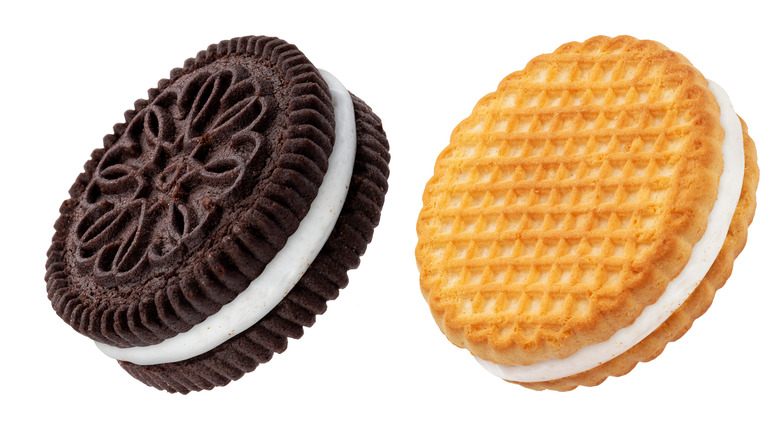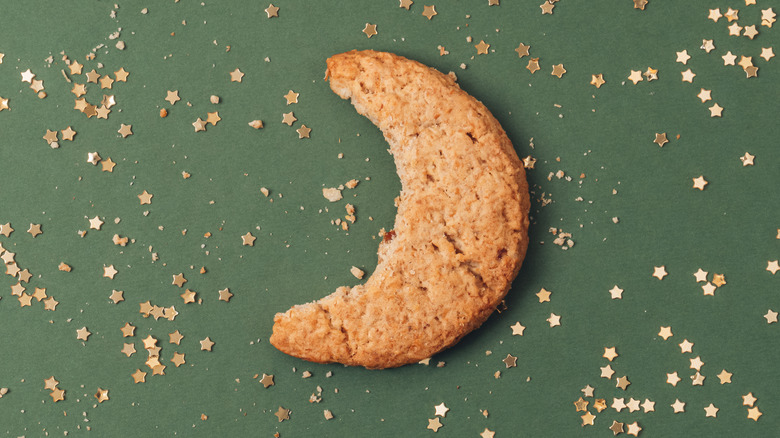The Surprising Connection Between Oreos And English Biscuits
Cookies and biscuits. Biscuits and cookies. A relationship as storied, as romantic, as complicated as that of Ross and Rachel, or Harold and Kumar, or Penn and Teller. Perhaps the appropriate comparison would be the Ancient Greek love story between Narcissus and his own reflection, as biscuits and cookies are two halves of the same whole. Small, sweet treats; what is called a "cookie" in America is often referred to as a "biscuit" in the rest of the English-speaking world, and there is perhaps none so internationally recognized as the Oreo. A perfect circle — the sugary embodiment of the Buddist concept of yin and yang – the Oreo cookie (or, for our British friends, biscuit) is essentially a disk of white frosting sandwiched between two black, chocolate-flavored wafers.
Why does the Oreo cookie have such a particularly strong hold on our hearts? What missing link connects the Oreo, and all of its wacky iterations, to the biscuits of the U.K. and Ireland, where such miniature confections of perfection are dunked not in milk, but in tea? And why do we, as a people, laugh at that googly-eyed, blue, furry monster when he sings "C is for Cookie," before ravenously consuming every last crumb of the precious manna when, if we are honest with ourselves, we share in his obsession? In a deep dive into the world of biscuits, Atlas Obscura claims that "it's honestly not that insane to say that the cookie/biscuit, if you include its predecessors, is one of the most important foods in human history." And for our money, if something is "not that insane," it's worth a second look.
Biscuits: a beautiful history
First: a history. The word biscuit is derived from the Latin panis biscoctus, a Roman name for twice-baked bread, which would form the sweet, crunchy foundation for the modern-day cookie (via The Guardian). In the old days (like, the very old days; think Ancient Mesopotamia), slices of bread were dried out in order to store them. Sumerians ground barley bread into a mash to make beer, medieval Muslims added sugar to the dough and wrapped the biscuits around figs and nuts for medicinal purposes (so you can feel better about giving your kids Fig Newtons, okay?) The twice-baked biscuit evolved into today's cookies over centuries, as people began to realize that actually, sugar tasted better than dried-out bread. We can be a bit slow, as a species.
By the time biscuits reached American shores, they had been upgraded from functional and medicinal to a pure indulgence, according to Atlas Obscura. The National Biscuit Company was formed in 1898 (later changing its name to Nabisco, as the word "biscuit" began to go out of vogue in Uncle Sam's cookie country) and began to look for ways to pay homage to biscuits' British beginnings while simultaneously showing America what was possible. According to Gizmodo, Nabisco introduced a sweet suite of cookies, known as "The Trio," which included Oreo Biscuits. The other two cookies in the "highest class biscuit" collection didn't last long, but Oreo Biscuits were a huge hit. Cut to: some brilliant mind probably said, "Drop the 'biscuit.' It's cleaner."
And here we are today, still unlocking the magic in every bite of an Oreo cookie.

